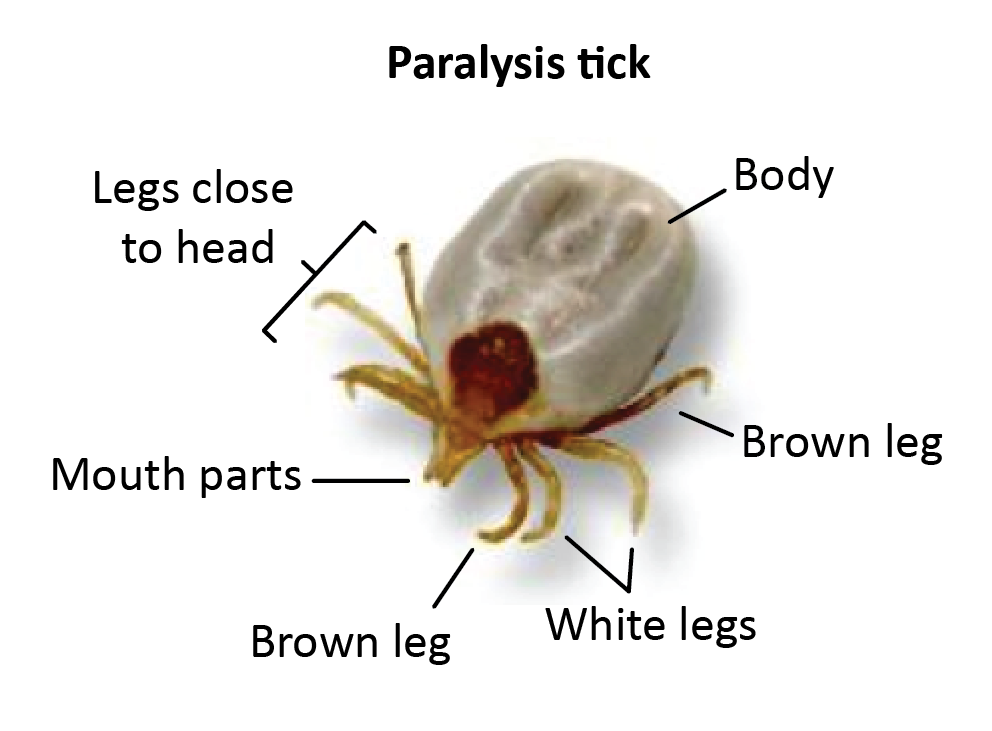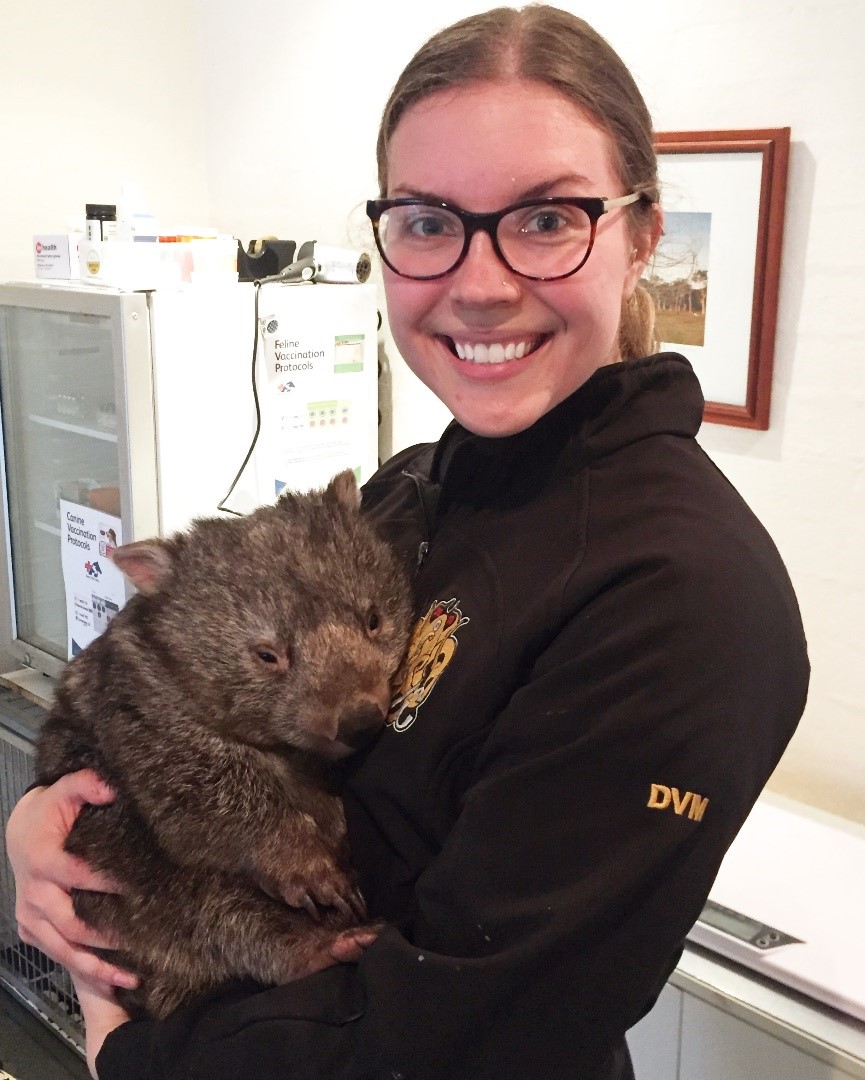As much as we don’t like to think about it, parasites are everywhere. I’m sure most of us are familiar with the wide range of insects we can find both indoors and outdoors. However, a lot of people don’t think about the dust mites that inhabit our houses or even the mites that most people can find living in their eyelashes! Luckily for us, these are microscopic and don’t usually cause us much harm.
While there are many harmless parasites, there are also a lot of parasites such as ticks, worms, mites and more that can cause serious disease in both animals and people. If there’s one thing my externship has taught me so far, it is the importance of parasite prevention and control in veterinary medicine. Different bugs come with different seasons, and of course Australia has its own set of unique parasites that I’ve done my best to learn all about!
 One issue that is quite common in this area of Australia is tick paralysis. In Canada, ticks are mostly only an issue in the summer months, however due to the warmer climate in Australia, tick paralysis can occur year-round. The tick responsible for this condition in Australia is simply called the paralysis tick (or Ixodes holocyclus if you really want to sound smart!). Ticks use their mouthparts to latch onto an animal’s skin, injecting saliva containing a neurotoxin that disrupts the connection between nerves and muscles. Not only does the toxin affect the muscles involved in standing and walking, but also those involved in breathing and swallowing. As a result, a bite from this tick has the ability to cause some serious health issues, such as paralysis, respiratory compromise and difficulty swallowing. (See a guide to identifying the Australian paralysis tick above on the right.)
One issue that is quite common in this area of Australia is tick paralysis. In Canada, ticks are mostly only an issue in the summer months, however due to the warmer climate in Australia, tick paralysis can occur year-round. The tick responsible for this condition in Australia is simply called the paralysis tick (or Ixodes holocyclus if you really want to sound smart!). Ticks use their mouthparts to latch onto an animal’s skin, injecting saliva containing a neurotoxin that disrupts the connection between nerves and muscles. Not only does the toxin affect the muscles involved in standing and walking, but also those involved in breathing and swallowing. As a result, a bite from this tick has the ability to cause some serious health issues, such as paralysis, respiratory compromise and difficulty swallowing. (See a guide to identifying the Australian paralysis tick above on the right.)
I dealt with my first case of tick paralysis at Berry Vet Clinic when a stray cat came in, emaciated and covered in ticks. She was already starting to show signs of tick paralysis, such as incoordination, weakness, and drooling. The first step in this cat’s treatment was to administer a dose of tick anti-serum. Anti-serum contains antibodies that bind to the tick toxin, preventing it from carrying out its effects on nerves and muscles. However, similar to the snake anti-venom in my previous post, animals can have an allergic reaction to the tick anti-serum. Usually, a dose of epinephrine (adrenaline) is given to the animal before administering the anti-serum, which helps prevent a reaction from occurring. After giving the cat epinephrine and anti-serum, myself and a few other staff members performed a thorough tick search on our patient. After shaving the cat’s fur to spot ticks easier, we removed about twenty ticks from this poor girl. Luckily, the cat recovered after treatment, and it turns out she wasn’t a stray after all – her picture was recognized online by her owner who had been searching for her for several weeks! Although she had been through a pretty rough ordeal, we were all thrilled to see her go home happy and healthy with her very relieved owner.
Have you ever been annoyed by flies buzzing around your face all summer? Well, horses in Australia definitely feel your pain! One benefit of our brutal Canadian winters is that we don’t encounter insects much – but in Australia, insects like flies and mosquitoes can irritate both horses and people year-round. An example of one of these insects are midges (small flies), which are the culprit of the dreaded “Queensland Itch” in horses. This condition is caused when a horse is bitten by a midge, leading to an allergic reaction. Affected horses become extremely itchy, and try to rub their bodies off any surface they can find to relieve the itch. If you’ve ever gone camping and came home covered in mosquito bites, you’ll understand how itchy and uncomfortable this can be. The intense scratching can lead to further issues, such as hair loss, sores, and wounds. While this condition is more common in the state of Queensland where temperatures are warmer, I still saw several cases of affected horses in New South Wales, so it can really happen anywhere midges are present. Luckily, this issue usually resolves pretty well after treatment with a corticosteroid (a type of anti-inflammatory medication), and can be prevented by using a pour-on insect repellent on horses at risk.

Hair loss on a horse affected by Queensland Itch.
The last Australian parasite of interest ties in with one of the coolest patients I saw during my externship – a wombat! Much to my excitement, I came into the clinic one morning and saw that a wombat was on our appointment list for the day. (Here I am in the photo on the right holding my favourite patient!) This wombat came from a local woman who rehabilitates injured and  orphaned wild wombats. This client became concerned about one of her juvenile wombats after he was lethargic and having diarrhea for a few days. One issue that is quite prevalent in wild wombats in the area is wombat mange. Just like in dogs, mange in wombats is caused by a certain species of mite that burrows into the skin, causing extreme itching. Wombat burrows are cool and humid, creating an ideal condition for mites to survive. This makes wombats extremely susceptible to mange compared to other Australian wildlife species. Unfortunately, wild wombats don’t have access to anti-parasitic medication, and often suffer extreme itching and discomfort without treatment. Luckily for this little guy, we were able to give him a dose of moxidectin, an anti-parasitic medication that protects against mange.
orphaned wild wombats. This client became concerned about one of her juvenile wombats after he was lethargic and having diarrhea for a few days. One issue that is quite prevalent in wild wombats in the area is wombat mange. Just like in dogs, mange in wombats is caused by a certain species of mite that burrows into the skin, causing extreme itching. Wombat burrows are cool and humid, creating an ideal condition for mites to survive. This makes wombats extremely susceptible to mange compared to other Australian wildlife species. Unfortunately, wild wombats don’t have access to anti-parasitic medication, and often suffer extreme itching and discomfort without treatment. Luckily for this little guy, we were able to give him a dose of moxidectin, an anti-parasitic medication that protects against mange.
After the wombat’s physical exam revealed no abnormal findings, we still weren’t sure why this patient wasn’t feeling himself. The veterinarian ended up taking a fecal sample to test for intestinal parasites, which could be a cause of diarrhea. However, a few days later, the client called to report that the wombat was doing much better and his diarrhea had cleared up. The fecal sample ended up being negative for parasites, so we never knew for sure what caused the wombat’s issues. This is a reality in veterinary medicine a lot of the time – you don’t always get clear cut answers or know why a patient is sick. I’m just relieved that this little wombat ended up recovering and that I got to interact with such an interesting native Aussie animal! That’s all for now – until next time, stay away from parasites and always deworm your pets!
